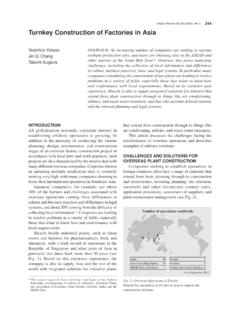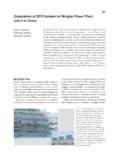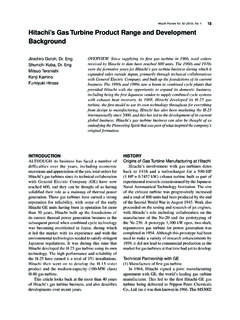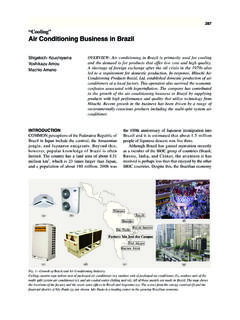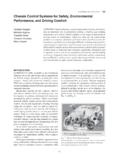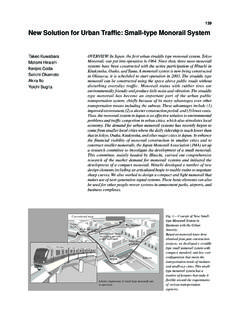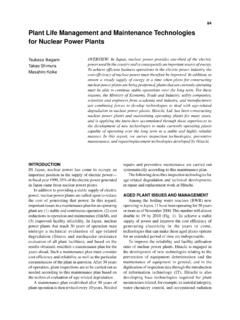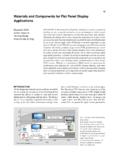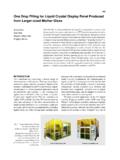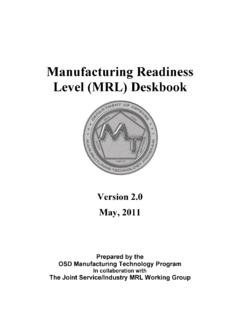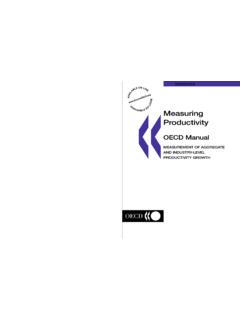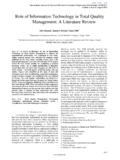Transcription of Evolution and Future of Critical Dimension …
1 Hitachi review Vol. 60 (2011), No. 5 203 Evolution and Future of Critical Dimension measurement system for Semiconductor ProcessesToru IkegamiAtsuko Yamaguchi, Dr. TanakaSho TakamiYutaka HojoAritoshi SugimotoINTRODUCTIONEVEN in the era of VLSI (very-large-scale integration) technology, LSIs (large-scale integrated circuits) have continued to achieve higher levels of integration in accordance with Moore s Law(1). The number of transistors per unit area in 2010 is more than one million times higher than in 1980, having continued to double every two years on average(2) and with further improvements in addition to progress in design technology, innovations in microfabrication have also contributed to these higher levels of integration by reducing minimum pattern dimensions by 70% every three years.
2 CD-SEMs ( Critical Dimension measurement scanning electron microscopes) are used in the semiconductor production process to measure properties of wafer circuit patterns such as line width and hole diameter. The measurement accuracy of these instruments has kept pace with advances in miniaturization since they first went on sale in 1984 and they have supported microfabrication of LSIs over this time by providing precise measurement techniques (see Fig. 1).A Hitachi CD-SEM won the Okochi Memorial Production Prize in March 2008(3) in recognition of the contribution to LSI miniaturization made by its measurement technology and in June 2010 Dr.
3 Hidehito Obayashi, Chairman of the Board [President, Chief Executive Officer and Director (then)] of Hitachi High-Technologies Corporation, the Hitachi group company responsible for this business, received the IEEE Ernst Weber Engineering Leadership Recognition from the IEEE(4).This article describes how Hitachi s CD-SEMs have evolved in step with their users and the Future prospects for this : Hitachi s first system for micro-scale dimensional measurement of semiconductors was the S-6000 CD-SEM commercialized in 1984 through a joint project between its electron microscope design and development division and semiconductor development division.
4 Working on the concept of supplying a measurement system rather than just hardware, Hitachi undertook measurement system development in collaboration with users and research institutions from around the world. Hitachi has gained a reputation among users in recent years for measurement solutions as well as CD-SEMs and its products are used at nearly all leading LSI manufacturers, with the total number of units delivered to date due to exceed 4,000 units during 2011. Hitachi intends to continue helping users by supporting advances in semiconductors through measurement : S-60002010: CG4100 Resolution: 15 nm1,300 nmMinimum pattern Dimension / measurement repeatability (nm)Minimum pattern dimensionYear32 nm10,0001, nmMeasurement repeatability198419861988199019921994199 61998200020022004200620082010 Resolution: nmFig.
5 1 Resolution and measurement Repeatability Keeping Ahead of Finer Pattern response to finer pattern line widths (from 1,300 nm in 1984 to 32 nm in 2010), the resolution of CD-SEMs ( Critical Dimension measurement scanning electron microscopes) has improved from 15 nm to nm and measurement accuracy from 15 nm to and Future of Critical Dimension measurement system for Semiconductor processes 204 DEVELOPMENTS AND ADVANCES IN CD SEMST ransition from Scientific Device to Industrial Instrument(5)In 1980, the industry was struggling to develop a process capable of achieving a minimum line width of 1 m.
6 Steppers had a central role in microfabrication for the 1- m process but faced problems with CD ( Critical Dimension ) control(6). There were also problems with measuring line widths using the optical techniques typically employed for dimensional measurement at this from Hitachi, Ltd. s Semiconductor Business Division together with the device development center and the Central Research Laboratory which was working on semiconductor process development proposed using an electron microscope for dimensional measurement in place of optical techniques. They established a project in conjunction with the electron microscope development division and embarked on the development of a new system for measuring the dimensions of LSI patterns using electron beams.
7 The concepts behind the development were as follows.(1) Dedicated machine for Dimension measurementSince the very first model, Hitachi CD-SEMs have been distinct from the electron microscopes of that time. They use in-lens detection systems which do not cast a pattern shadow that could affect the measurement , and measurement techniques were developed based on use of a fast and precise XY stage.(2) Industrial instrument suitable for use at production sitesThe primary aim was to perform non-invasive measurements that did not require preparatory steps. This led to the adoption of measurement techniques that used low-energy electron beams.
8 The second priority was that the instrument could be installed in production sites and the third was that the instrument would not require a specialist operator and could be used by anyone without operator-to-operator variation in measurement a time when electron microscopes were located in special-purpose dark rooms(7), the idea of making an instrument that could be installed in production sites bordered on defiance of common sense. However, Hitachi was a leader in the field of electron microscope development and had technology for high-intensify FE (field emission) electron guns which it had just commercialized(8).
9 The CD-SEM performed rapid scanning (television scanning) of an electron beam from a high-intensity FE electron gun and was able to be used without a dark room thanks to its use of image memory which was ahead of its concept of producing an instrument that could be used by anyone was a major step away from the assumption that electron microscopes were scientific devices for use by researchers. The user representative on the project team identified the measurement procedures used in the semiconductor production process and a computer-controlled measuring system that anyone could use to perform measurements was devised by programming these procedures as recipes that could be selected from a screen.
10 (3) measurement systemTurning an electron microscope into a measuring instrument requires that it be made into a system whose measurements can be calibrated to ensure traceability. As no dimensional calibration system for electron microscopes existed even at public institutes, Hitachi embarked on the development of a dimensional calibration system in parallel with the development of the CD-SEM(9).In collaboration with the National Institute of Advanced Industrial Science and Technology, Hitachi developed the world s first standard microscale with a 240-nm pitch for use as a sample for nanometer-order calibration of magnification.
